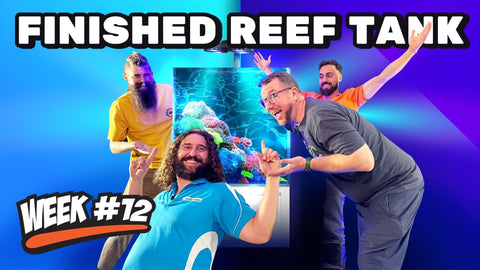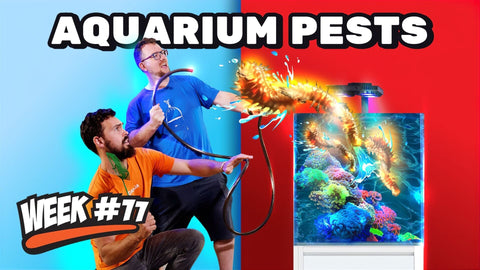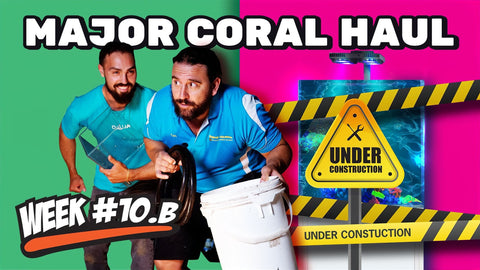How To Clean and Maintain Your Saltwater Aquarium | 12 Week Reef Video Tutorial #10A
Week 10: Maintenance, Coral Selection, and Scaping Your Reef
Week 10 is here, and it’s all about reef tank maintenance, coral selection, and strategic coral placement! Adding new life to your tank while ensuring stability is key to creating a vibrant, healthy ecosystem. Today, we’ll dive into the best maintenance for a reef tank, learn about nutrient control, and explore coral placement techniques to bring out the best in your reef.
Coral Growth and Nutrient Management
Corals are now thriving in the 12-week reef setup. However, as we add more corals, the tank needs more regular maintenance to manage nutrient buildup, like nitrates and phosphates. These nutrients can affect coral health, impacting both color and growth. Too many nutrients lead to brown or “over fed” corals, while too few can cause corals to lose color and bleach. Balancing nutrient levels creates a colorful, glowing reef. For effective nutrient control, reliable equipment, like a protein skimmer, is essential. By cleaning protein skimmers regularly, you can keep nutrient levels balanced and ensure optimal water clarity.
Essential Reef Tank Maintenance Tasks
For most reef tanks, a monthly maintenance routine helps to stabilize conditions and prevent long-term issues. Here’s a breakdown of tasks that support the best maintenance for a reef tank:
- Testing Nitrates and Phosphates: Monitoring nutrient levels is crucial for maintaining a healthy balance in your reef.
- Protein Skimmer Cleaning: Cleaning protein skimmers removes organic waste, which can prevent excess nutrient buildup.
- Water Changes: Performing routine water changes helps reduce nutrient buildup and replenish essential minerals, directly supporting coral health.
- Cleaning Glass, Socks, and Equipment: Regular cleaning of filter socks, glass, and other equipment keeps your tank looking clear and your ecosystem stable.
- Dosing and Additives: Adjust dosing based on test results to support coral growth and keep your reef’s parameters steady.
Coral Placement and Rescaping Techniques
Adding corals is as much about placement as it is about selection. Coral positioning should account for flow, lighting, and growth patterns to ensure compatibility. Strategic placement helps to create a balanced ecosystem that mirrors a natural reef. If you’re starting a reef tank and considering coral placement strategies, keep these in mind:
- Growth Patterns and Space Needs: Some corals, like hammers, spread outward, requiring more space.
- Water Flow Requirements: Certain corals prefer high flow, while others thrive in lower flow areas. Observing these differences can enhance coral health.
- Lighting Adjustments: Coral placement should complement your lighting schedule, ensuring all corals receive sufficient light for growth and color.
A Day with Gallery Aquatica
Special guest Cam from Gallery Aquatica dropped by the studio to share some pro tips on maintaining and scaping a reef tank. Together, we checked all the parameters and made a few adjustments. Cam reassured us that repositioning corals or making small changes to the tank’s scape is completely normal. As your reef matures, you may need to rearrange corals to accommodate growth or improve aesthetics.
Week 10 Recap: Stability and Growth
This week was packed with advanced reefing topics! The 12-week reef is maturing beautifully with four fish and over 15 corals, each carefully placed to promote a thriving ecosystem. Next week in Week 11, we’ll continue building with even more corals, discuss pest prevention, coral feeding, and advanced dosing techniques.
Ready to dive deeper? Stay tuned as we approach the home stretch and get one step closer to a stunning, fully stocked reef tank!





